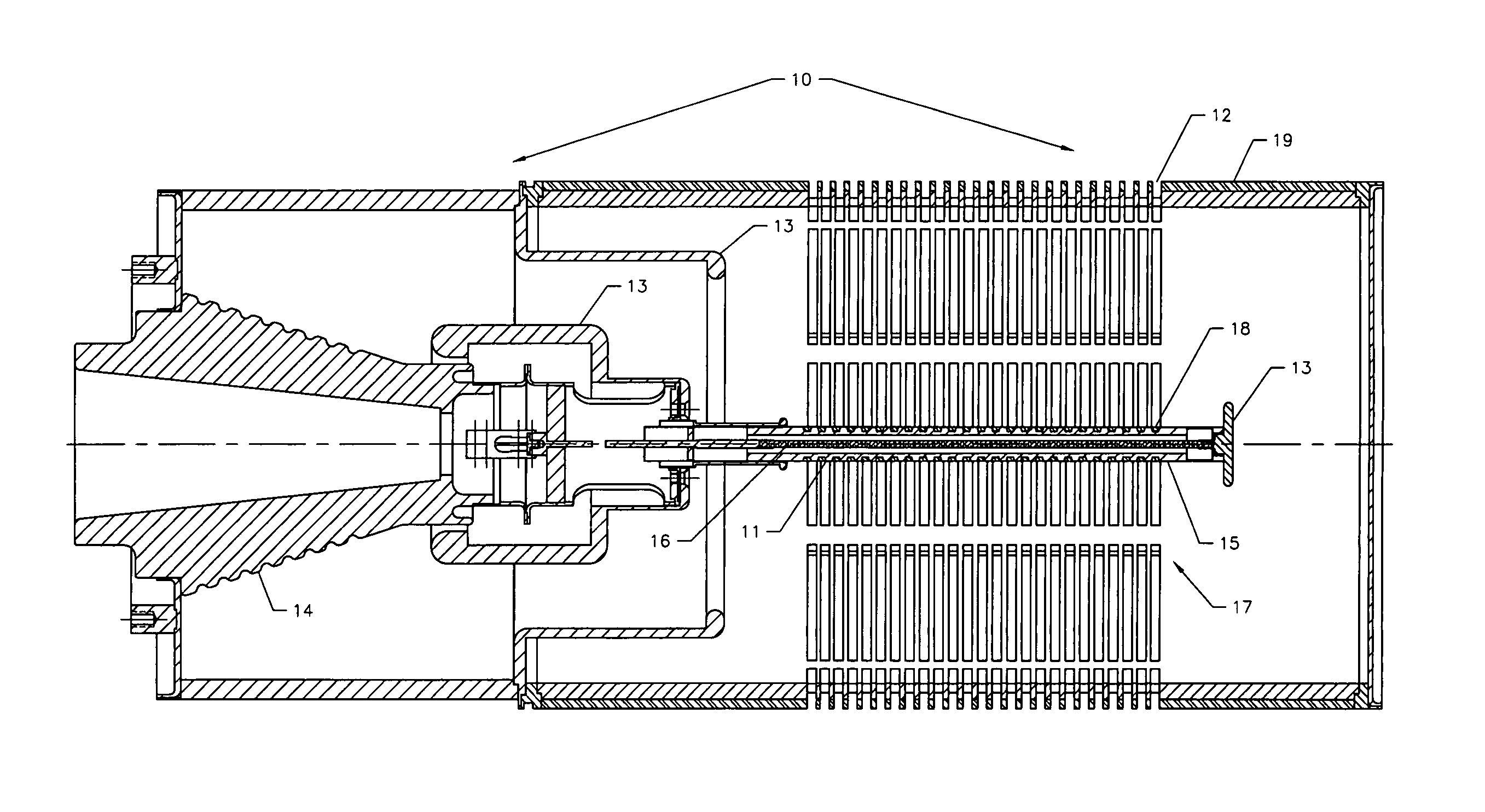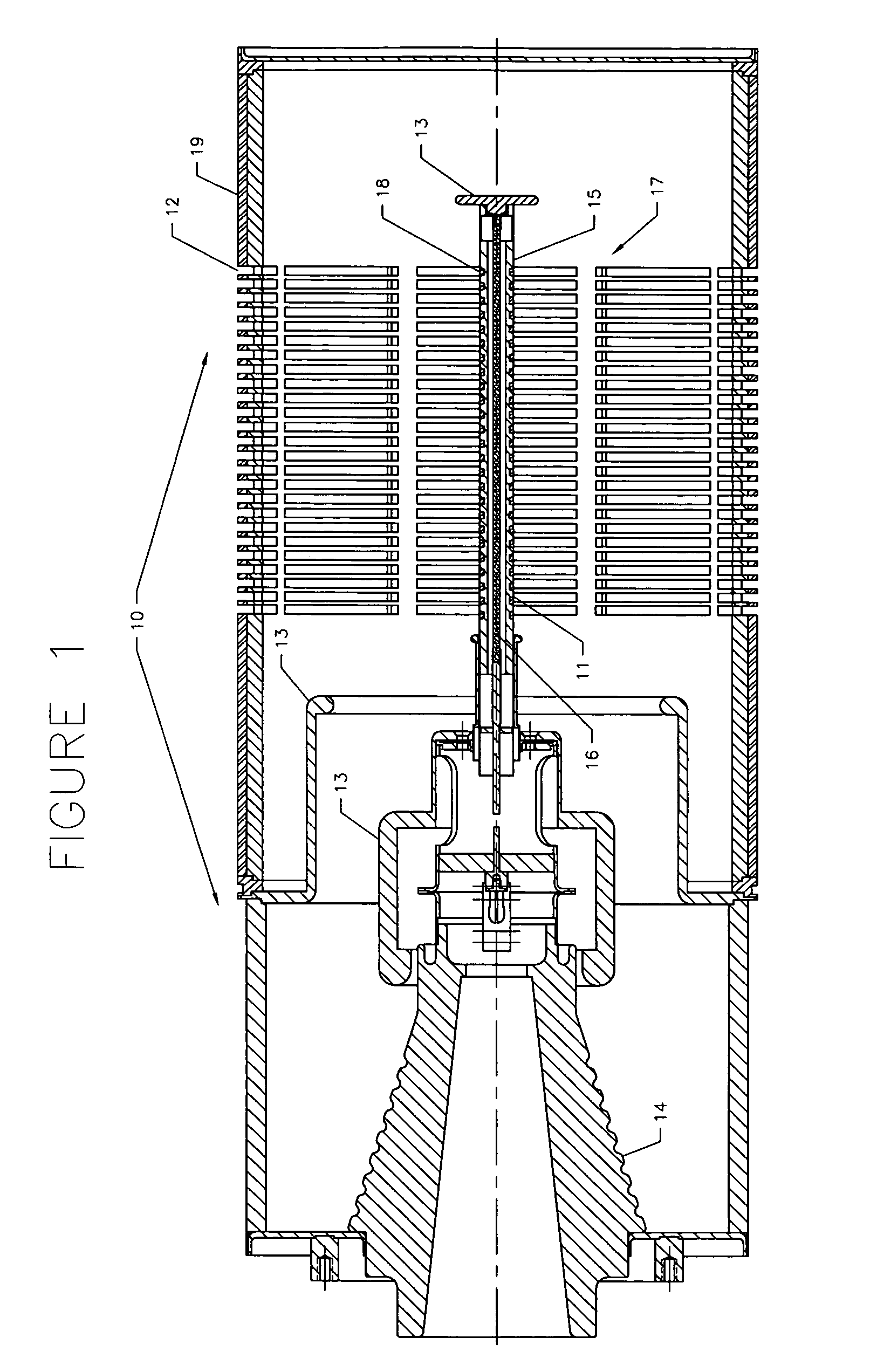Source for energetic electrons
a source and electron technology, applied in the field of energetic electron sources, can solve the problems of short mean time between failures of electron beam devices, limited power output, air poisoning or disease-causing toxins, etc., and achieve the effect of facilitating direct bonding of beam exit foils, facilitating good heat sinking of beam exit window materials, and simplifying beam optics
- Summary
- Abstract
- Description
- Claims
- Application Information
AI Technical Summary
Benefits of technology
Problems solved by technology
Method used
Image
Examples
Embodiment Construction
[0011]Referring now to FIG. 1, there is illustrated an embodiment of this invention. The electron flux generator 10 is of a generally cylindrical shape. It uses materials and construction techniques typically used in the design and manufacture of microwave tubes. For example a stainless steel shell for the tube will provide the structural strength needed to maintain the tube with a vacuum within and atmospheric conditions without. The electron flux generator 10 includes a cathode 11 which may comprise a dispenser type or an oxide type cathode, for example, or a tungsten wire filament, or filaments, heated to a high temperature or any variety of cold electron emission devices. Either a dispenser or oxide type cathode offers operation at relatively low temperature compared to a tungsten wire filament. The dispenser cathode, for example, operates at a temperature of less than about 1000° C. while an oxide type cathode operates at a temperature of less than about 850° C., compared to a ...
PUM
 Login to View More
Login to View More Abstract
Description
Claims
Application Information
 Login to View More
Login to View More - R&D
- Intellectual Property
- Life Sciences
- Materials
- Tech Scout
- Unparalleled Data Quality
- Higher Quality Content
- 60% Fewer Hallucinations
Browse by: Latest US Patents, China's latest patents, Technical Efficacy Thesaurus, Application Domain, Technology Topic, Popular Technical Reports.
© 2025 PatSnap. All rights reserved.Legal|Privacy policy|Modern Slavery Act Transparency Statement|Sitemap|About US| Contact US: help@patsnap.com



